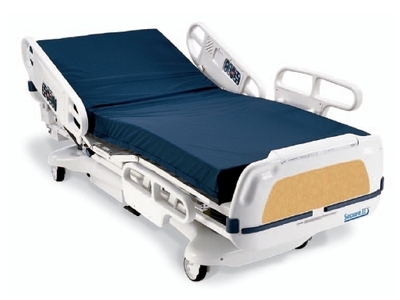America alone is home to more than 6,200 health facilities. All these hospitals have stretchers that play an invaluable role during emergencies. Years back, stretchers were basically hospital beds with steel poles. However, today’s stretchers are more than a hospital bed frame used for transporting the injured. A modern hospital stretcher comes with life support equipment that can save lives. There are different stretcher types deployed in various hospital departments. This means that a maternity ward stretcher will differ from that of a radiology unit. In short, every hospital stretcher type has its particular specifications.
There are basics that every hospital stretcher needs to have. They include an oxygen tank holder, perimeter bumpers, side rails, and restraint straps. The stretcher’s diagonal corners should have mounted brakes. Remember that brakes are vital to the driver when steering a hospital stretcher. The picture cannot be complete without a stretcher bed mattress. Mattresses prevent further injury through shock absorption. The mattress also supports the spine, neck, and head while on a flat back. Therefore, there’s more to a hospital bed than simply sleeping. Here is what you need to consider when buying hospital beds.
1. Desirable Features
The majority of home hospital beds are height adjustable, electric, and wooden. However, the market offers many options when scouting for hospital beds or stretchers for sale. The bed can have wood finishes, side railing, and tilting feature, among others. Having a list will help remember every feature you need. Among the possible features to include in your list are:
- Capability of accommodating air mattresses
- Height adjustment
- Side rails
- Ability to operate using a remote control
- Tilt feature
- Custom wood color
- Completely enclosed wooden foot and headboard
2. Profiling Mattress Platform
Most new and refurbished hospital beds have a profiling feature. This allows for the user to be able to sit-up as well as raise their legs to any comfortable position. A leg raiser, knee break, and head/backrest are characteristic features of profiling mattresses. A remote handset also makes electrical operation possible. This is not only convenient for the user, but also the caregiver who is able to easily nurse because they can properly position the user.
3. Low Bed for Users Prone to Falling
A common standard-height bed and low hospital beds are highly similar. The only difference is the possibility of lowering the bed nearly to the floor. A lowered hospital bed can go as low as 20 centimeters from the floor. The impact of falling is nothing much to worry about with such a short distance. Low beds are the best option for persons prone to falling. This explains why side rails are becoming less popular in favor of low beds.
4. Topnotch Quality
Purchasing a hospital bed is normally a one-time investment. A bed that won’t last you many years is the last thing you want. Always consider quality before looking at the price tag. You cannot go wrong with a hospital bed that has a warranty. Make sure that spare parts and labor costs are part of the warranty. Paying a low price for a bad quality bed will cost more in the future.
5. Suitable Design
Some people don’t like hospital beds that look uninviting and clinical. This is for good reason as such looks can make any living space cold. Fortunately, some dealers offer designer hospital beds. Keep in mind that a designer bed can cost an extra penny. However, a hospital bed with customized wood colors can help when on a budget. Such a bed will blend with your furniture without having to pay a fortune. Homely cushions and beddings will also make the room welcoming and cozy.
6. Choose a Good Supplier
A good supplier will help you get value for money. In fact, a reliable supplier is as essential as the hospital bed itself. One with excellent delivery and installation service is the best. Inquire about the supplier’s after-sale service and scout for reviews if possible.
7. Buy the Mattress from the Same Hospital Bed Vendor
Buying a mattress and bed from the same dealer avoids confusion should issues arise. A good example is when a faulty bed damages the mattress. Lodging a complaint can be tricky after sourcing from different suppliers in such a case. As a rule of thumb, always go for high-quality mattresses.


Recent Comments